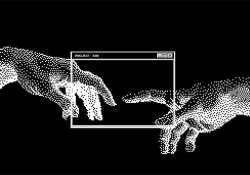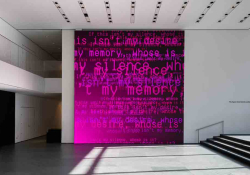Reading Multilingual Arab Literatures Globally in the Twenty-First Century

Can contemporary reading methods catch up with the proliferation of and innovation in multilingual Arab literatures in ways that help combat ossified and misleading labels like “the Middle East” and “the Arab world”? The definition of “reader” should be widened to include anyone invested in reading Arab and Arabic texts.
Arab literatures have diversified to an extent that demands a concomitant evolution, if not revolution, of reading practices. A more nuanced and inclusive approach to studying, translating, anthologizing, publishing, and teaching is needed to help counteract orientalizing tendencies that persist in the marketing of literatures from and about the Arab region as well as in mainstream news media. A collective effort toward an objective, fair, and comparative “representation” of Arab literatures would reveal complex realities not only between but also within so-called Arab versus Western entities.
Reading and Writing Arab Literatures
AS WAÏL HASSAN points out in his introduction to The Oxford Handbook of Arab Novelistic Traditions (2017), writing by Arab authors is now a global phenomenon on all six continents: outside of the twenty-two Arab League member nations, the Arabic-language novel is also produced in Chad, Eritrea, Mali, Nigeria, and Senegal as well as in Western countries (e.g., Lebanese authors Hanan al-Shaykh in London and Hoda Barakat in Paris). Not only are some Arabic-language novelists translated into numerous languages, a problematic topic to which I will return, but many Arab novelists also write in at least eleven languages: Arabic, Catalan, Dutch, English, French, German, Hebrew, Italian, Portuguese, Spanish, and Swedish. Some of these authors write in foreign languages while based in Arab countries (e.g., anglophone Lebanese Australian novelist Nada Awar Jarrar, based in Beirut). This expansive multilingual literary field makes Arab novelistic traditions, as Hassan argues, an “inherently and internally comparative field of study.” He concludes that “Arab literary production has outgrown the pedagogical and institutional structures organizing literary studies (single-language departments such as Arabic, English, French, and so on; language families like Semitic, Romance, Germanic; and area studies such as Middle or Near Eastern languages), and it can help us imagine new patterns of comparison and configurations of knowledge.” In short, examinations of Arab literatures should move beyond narrow and at times artificial linguistic, geographical, and disciplinary borders in order to keep pace with these literatures.
In a similar vein, Reuven Snir notes that “whether the Arab Spring is considered to have failed or not, it continues to produce various literary experimental manifestations which will certainly change the face of Arabic literature” (Modern Arabic Literature, 2017). Two possibilities, he opines, would further diversify this corpus. First, if Islam loses its dominant cultural, if not political, role, the development of independent Arabic literatures may accelerate. Second, should local dialects become normalized in literary writings at the expense of modern standard Arabic, the variety would skyrocket. Furthermore, he clarifies that the “internet has become a virtual library for billions of Arabic literary texts housed on millions of websites.” Snir encourages scholars to carry out research on the literatures now available online and in social media, concluding that “Arabic literature is now in another place, but its scholarship needs time to adapt to the dramatic change it has undergone.” Examining online publishing and self-publishing—an underexplored realm—would shed light on fresh voices and styles, thus complementing and enriching our understanding of literatures in print. Claire Gallien also advises that we need “to rethink Anglo-Arab literatures outside the box” in order to combat lingering perceptions of such texts as purveyors of more or less ethnographic information about the Muslim/Arab Other in the wake of 9/11 or as exotic elements to satisfy an unabated desire for exaggerated cultural differences.[i]
Depth notwithstanding, many academic readings have remained shortsighted. According to Hassan, both disciplinary and institutional barriers have created a split between Arabic-language and foreign-tongue Arab writings, for example, between arabo- and francophone novels from Lebanon, Tunisia, Algeria, Morocco, and Mauritania. For many, Arabic-language works are still considered part of Arabic studies, while French-language texts continue to be perceived as part of francophone studies. This skewed perception results in works in the two languages “rarely, if ever, studied together.” Worse still, this linguistic split “replicates the binary division of colonial space between colonizer and colonized.” Similarly, he states that studies of early Arab mahjar (immigrant) literature have focused only on those who write in Arabic, disregarding the output of Arab writers in other languages. Arab novelists writing in other languages tend to fall between the “disciplinary cracks.” Fortunately, recent studies have begun to counteract these trends, whether by stressing the Arabness of foreign-language texts geographically, linguistically, thematically, and generationally or by comparing multilingual texts tied to a particular Arab country or to original versus host countries in a diasporic context.[ii] Critical of disciplinary blind spots, Jumana Bayeh argues that Middle East scholars have often remained, almost myopically, trained “upon a single spot on the map,” thus marginalizing the histories of Middle East migrations, whether into or out of the region.[iii] Fueling this fixation, I would add, is insufficient interdisciplinary and/or interlingual collaboration between Euro-American and Arab or Middle Eastern scholars.
Translating Arab Literatures in the West
ADDITIONALLY, THREE PRACTICES in the Western publishing industry still contribute, at least on occasion, to a biased perception of Muslims and Arabs in the West. First, translation of Arabic texts occupies a very small share, with sociopolitical agendas and market forces choosing which Arabic texts get translated. In turn, it has been shown how translators may further subject such texts to a “process of selective appropriation” that manipulates, or “whitewashes,” the content in order to make it palatable to and/or simpler for Anglo-American readers.[iv] Regrettably, Arabic texts deemed too complex or experimental remain largely unknown. For example, The Yacoubian Building, translated in the wake of 9/11, “was promoted as providing an interpretation of terrorism: corruption, oppression, injustice and Islamic sensibilities, combined, are finally made to produce a terrorist. . . . Western readers are invited by the translator, reviewers, publishers and by their very preconceptions to receive the book as an ethnographic report on Arab Others.”[v]
As Alameddine sees it, ethnic authors who make it in the West are perceived to be the “purveyors of comforting myths for a small segment of the dominant culture that would like to see itself as open-minded.”
Second, commercial reviews, understandably motivated by concerns for profit, contribute to the exoticization of cultural differences. For example, Lebanese American Rabih Alameddine, translated into over forty languages, writes: “Whenever I read reviews of my work, I notice that I am still the tour guide,” adding that, in a New York Times review, one of his novels was called a “bridge to the Arab soul.”[vi] In a world with over 450 million Arabs who belong to multiple religions, sects, ethnicities, and languages, such a characterization is not only “discomfiting,” to use Alameddine’s own description, but also vacuous. As he sees it, ethnic authors who make it in the West are perceived to be the “purveyors of comforting myths for a small segment of the dominant culture that would like to see itself as open-minded.” Put another way, “there is more other, scarier other, translated other, untranslatable other, the utterly strange other, the other who can’t stand you. Those of us allowed to speak are the tip of the iceberg. We are the cute other.” When translations become more inclusive and marketing more nuanced, a more complete picture of the Arab world will emerge.
Finally, anthologizing translated Arabic texts and thus admitting them to world literature, albeit a very welcome act, is still fraught with problems. Until now, much of the granularity in Arabic literatures is lost “once it is examined through the vantage point of world literature: major figures are unnoticed, significant specificities unaccounted for, and essential trajectories unheard of.”[vii] Thus, ironically, instead of making visible a whole tradition or at least coherent segments thereof, oftentimes world literature anthologies help uphold stereotypes. A wider-ranging and historically minded approach would remedy this problem in the long run.
Ironically, instead of making visible a whole tradition or at least coherent segments thereof, oftentimes world literature anthologies help uphold stereotypes.

Future Directions
IN THE LAST FEW YEARS, changes in direction, scope, and rationale in studies of Arab literature have emerged, but more needs to be done. As Hassan explains in his introduction, by emphasizing the development of the Arabic novel within the framework of the nation-state, five levels of tradition become apparent: the subnational (minorities and subregions), the national, the supranational region (countries of the Maghreb, the Levant, and the Gulf), the pan-Arab (a broader supranational grouping), and the transnational (Arabic literature as part of larger categories, for example North African, West Asian, Middle Eastern, postcolonial, or world literature). The nation-state, as he points out, might be taken as a starting point but not as a horizon. By focusing on the subnational, so far the least studied, a more complex and therefore more accurate body of knowledge would be produced. In a similar vein, Bayeh proposes a diasporic reading method in order to cast doubt over the Middle East or the Arab world as a “demarcated region,” thus enabling the discovery of crisscross lines that connect various communities. Understanding this region as what she calls a “diasporic cartography” would expose it as a “set of networks holding together people and things, places and practices.”
As Ulrich Beck and Natan Sznaider have argued, the twenty-first century has witnessed a global transformation of modernity that calls for a reconceptualization of the humanities and social sciences.[viii] Arab studies, too, should join the movement away from binary analytical methods, such as East-West, national-transnational, and especially colonial-postcolonial. Although Arab literatures have made a long-overdue entry into the twenty-first-century literary canon, the relatively simplistic East-West dichotomy inherited from Orientalism remains at the heart of the postcolonial paradigm.[ix]
Although Arab literatures have made a long-overdue entry into the twenty-first-century literary canon, the relatively simplistic East-West dichotomy inherited from Orientalism remains at the heart of the postcolonial paradigm.
Collaboration between arabophone and a diverse range of scholars would help create a much more dynamic view of the Arab world. In addition to joint academic projects, translators from Arabic need to assert the translatability of Arabic (i.e., to show that it is not a controversial language, as many still claim it is),[x] by striving toward a more comprehensive and therefore a more representative coverage of Arabic literature. Writers, too, should write for excellence and not as cultural translators or mediators, as many still do in the so-called Third World, according to Anjali Pandey. Alameddine stresses the need for authors’ intellectual independence thus: “I write because I have something to say to me.” He adds, “When I am put on a panel to represent the Arab world, it frightens me.”[xi]
Beyond Geopolitical Labels
BOTH INTELLECTUAL open-mindedness and an ethical engagement with Arab literary traditions can go a long way in combating mainstream news media and the popular sphere where Arabness is more often than not reduced to the lexicon of sectarianism, religiously inspired violence, and female subjugation.[xii] Western interest in the Arab world since 9/11, intensified in the wake of the 2011 Arab Spring, requires an appropriate and measured response from those “in the field.” Contemporary Arab literatures continue to redefine their sense of contemporary realities. In Arab studies, scholars, translators, editors, publishers, teachers, and students need to catch up with these new developments by adopting, as some have begun to do, a pluralistic historiography governed by a search for a poetics and politics of movement in order to multiply the axes of comparison. If all these groups were to read and therefore re-present multilingual Arab literatures comparatively and conscientiously, then slowly but surely the body of knowledge produced would reach the general Western reader, who will, in turn, begin to perceive, and correctly so, the Middle East, MENA (the Middle East and North Africa), or the Arab world as no more than geopolitical labels that mask, if not occlude, much more intricate histories, experiences, and sensibilities. Only then would personal and collective Arab identities appear as they truly are: not bordered but open, intersectional, contingent—and therefore in flux and in a state of continual self-fashioning.
Beirut, Lebanon
[i] Claire Gallien, “Anglo-Arab Literature: Enmeshing Form, Subverting Assignation, Minorizing Language,” Commonwealth Essays and Studies 39, no. 2 (2017): 5.
[ii] In this order, see Jumana Bayeh, The Literature of the Lebanese Diaspora (2015); Michelle Hartman, Native Tongue, Stranger Talk (2014); Syrine Hout, Post-War Anglophone Lebanese Fiction (2012); Felix Lang, The Lebanese Post-Civil War Novel (2016); Ghenwa Hayek, Beirut, Imagining the City (2015); and Waïl Hassan, Immigrant Narratives (2011).
[iii] Jumana Bayeh, “Anglophone Arab or Diasporic? The Arab Novel in Australia, Britain, Canada, the United States of America,” Commonwealth Essays and Studies 39, no. 2 (2017): 18.
[iv] Ghenwa Hayek, “Whitewashing Arabic for Global Consumption: Translating Race in The Story of Zahra,” Middle Eastern Literatures 20, no. 1 (2017): 94.
[v] Sherif Ismail, “Arabic Literature into English: The (Im)possibility of Understanding,” International Journal of Postcolonial Studies 17, no. 6 (2015): 922.
[vi] Rabih Alameddine, “Comforting Myths: Notes from a Purveyor,” Harper’s Magazine, May 14, 2018.
[vii] Omar Khalifah, “Anthologizing Arabic Literature: The Longman Anthology and the Problems of World Literature,” Journal of World Literature 2, no. 4 (2017): 521.
[viii] Ulrich Beck and Natan Sznaider, “Unpacking Cosmopolitanism for the Social Sciences: A Research Agenda,” British Journal of Sociology 57, no. 1 (2006).
[ix] See Muhsin al-Musawi, The Postcolonial Arabic Novel (2003); Lindsey Moore, Narrating Postcolonial Arab Nations (2018); and Anna Ball and Karim Mattar, eds., The Edinburgh Companion to the Postcolonial Middle East (2018).
[x] Robyn Creswell, “Is Arabic Untranslatable?” Public Culture 28, no. 3 (2016): 452.
[xi] Somak Ghoshal, “My Wounds Will Not Be Healed in My Lifetime: Rabih Alameddine,” Livemint, April 6, 2018; Supriya Sharma, “Jaipur Literature Festival 2018: Arab Literature and the Internalising of Racism,” Hindustan Times, June 22, 2018.
[xii] Creswell, “Is Arabic Untranslatable?” 449.











